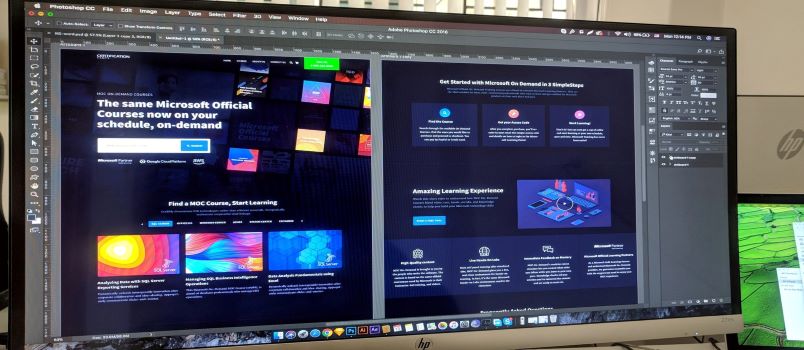On the internet today, there are about 1.89 billion websites. Some of them are begging to be visited, while others are having effortless traffic every day.
The design of a website has a lot to do with whether it’d end up being revisited or appalled.
Do you want to start a new website? Or you are new to web design and you’re looking for where to start, this post is a perfect read for you.
Let’s get straight to answering the 6 questions about website design.
What Does Web Design Mean?
Web design is a subset of web development which involves the entire process of creating and maintaining a web page layout, including its graphics design, content flow and typography.
There are basically two reasons for doing a website design:
Firstly is to achieve a particular goal through the website. This has to be defined by you or the business you’re designing for. What will the website be used for? What do you expect your users to do?
Secondly is to give the users of your website the most pleasant experience as they navigate through different web pages. This will involve the content layout, the color, the fonts, the graphics (pictures and/or videos) and sounds.
The page layout, color, font, images, etc will be applied creatively to achieve the goals mentioned above. This is simply what website design is about.
Can everyone design a website?
The answer is yes, everyone can design a website. Web design is a very simple skill to learn, you can even learn web design in 3 hours. You just have to be interested, creative, and you have an eye for good designs.
Designing a website isn’t as hard as you think. You don’t even have to employ a “professional” who’d probably charge you some high figures for what you can easily learn and apply to your new website.
All you need to start is a computer that runs on either Windows, Mac or Linux.
What do I need to learn in order to create a website design?
As explained earlier, web design involves the process of structuring a web page to achieve its intended goal and to appeal to its users visually.
In order to structure a web page, you should be aware of two basic programming languages, which are HTML and CSS. You can possibly learn Javascript too. Once you have these codes up your sleeve, you’re good to go.
You also need to get familiar with image design tools like Photoshop and Sketch. Also, website design tools like Dreamweaver is necessary to familiarize with.
How can I start a career in web design?
Starting a career in website design is quite easy, get to learn first as explained in the previous section.
Most people who start out learning web design for their personal websites can always be hired for other web design jobs. Since you already have a good looking sample from your personal project, you can tell others you did it.
That’s all that it takes to start. Among the so-called professional web designers, it is called a portfolio.
As your completed website design projects increase, your portfolio increases, you get more credible and you can ask for referrals from your satisfied customers.
How much can I earn by designing websites?
Depending on the type of website a client asks for, you can start earning from $1000 – $3000 per project. As you grow, you can charge even double for the same. Even web design agencies earn as much as tens of thousands of dollars per project.
Website design is quite a lucrative skill. However, the market is crowded with lots of web-design wannabes like you. To stand out, you must be willing to go the extra mile in learning, practicing a lot and updating your knowledge consistently.
What’s the Future of Website Design?
One primary thing to expect of website design in coming years is that it’s going to become more important; every business, organization, brand and even persons will need to have their voice heard on the internet via a website. A growing web designer can always be relevant.
Also, taking a cue from the spread in the use of mobile devices, there’ll be a demand for better and improved mobile interface for websites.
Furthermore, with the increased popularity of AI and Data science, website designs must be able to adopt these technologies to make the user experience as responsive and personalized as possible.
Lastly, VR and AR are dominating the media use day by day, therefore web pages of the future must easily adapt to these technologies.





